“I was stunned and mad to learn that we have more foster kids in Los Angeles than anywhere else in the country,” Christian Bale, the beloved Batman actor, shared. This drove him to want to keep brothers and sisters in foster care together, and he plans to build a ’village’ to make it happen. He also talked about what made him decide to take on such a big project.
Bale recently showed off plans for a new ’village’ in California.

Christian Bale, known for his roles in movies like American Psycho and the Batmanseries, has been working on an idea since his daughter was born in 2005. Now, he’s taking action.
His vision includes building 12 foster homes, two studio flats for kids transitioning to independent living, and a 7,000 square foot community center. Bale wants to keep siblings in foster care together, ideally living under the same roof. So, he’s leading the charge to create a special complex that will make this possible.
It’s set to be the first of its kind in the state.
Construction is currently ongoing on the project, which is estimated to cost $22 million and is expected to be completed by 2025. The village will be located next to a park in Palmdale, a city situated 60 miles north of Los Angeles.
Christian Bale, aged 50, who co-founded Together California, the organization driving the development, described the village as “something absolutely new, totally transformative, and something completely needed.”
He expressed a deep desire to change the sad reality by launching the village project.

Christian Bale spoke passionately about the heartbreaking experience of children losing their families and being separated from their siblings. He hoped this initiative would raise awareness in the community about the challenges these children face and encouraged people in California and Los Angeles to come together to support them.
“Imagine the absolute pain and the trauma of losing your parents or being torn from your parents, and then losing your brothers and sisters on top of that,” he explains.
Bale said he learned about helping others and taking action from his dad, David.
Bale added that growing up their home was always open to those in need, “We were always having other people coming and living in our house who didn’t have homes, etc. That’s just the guy that he was.”
The actor revealed that his drive to help children in need was ignited after the birth of his daughter, Emmeline, in 2005. Bale admitted that he found himself deeply pondering what life would be like for his daughter if he wasn’t around.
Bale shared that he was “mad” to find out that Los Angeles has the highest number of foster children in the country. He admitted feeling frustrated with himself for not knowing about this earlier, prompting him to decide to focus on addressing the issue. He and his wife resolved to do everything they could to make a difference.
Christian Bale’s kindness towards those who need help is really amazing. Whether he’s standing up for foster children in Los Angeles or doing other good deeds, Bale’s commitment to making the world better shows us the power of caring. Before you go, why not read another touching story? It’s about a woman who adopted her husband’s ex-wife’s baby so he wouldn’t have to grow up in foster care like she did.
Preview photo credit Collin Xavier/Image Press Agency ABACA/Abaca/East News, ZUMA Press, Inc. / Alamy Stock Photo
My MIL Rearranged Everything in My Apartment While I Was on My Honeymoon – A Week Later, She Was Livid When I Gave Her Payback

Everly thought married life would bring new beginnings, but instead, she finds herself plunged into an old family conflict when she uncovers her mother-in-law Lilith’s meddling ways. With her privacy invaded and her belongings tampered with, Everly is drawn into a cunning battle of wills.

A mother-in-law standing with her arms crossed with her son and daughter-in-law appearing happy in the background | Source: Shutterstock
Ever since I married Austin, I’ve heard stories about the legendary mother-in-law feuds, but I always thought, “That won’t be me.” I imagined Lilith, Austin’s mom, and I would be different. Boy, was I wrong?

A skeptical elderly woman | Source: Shutterstock
It started subtly enough. Lilith was polite—smiles, hugs, the works. But something flickered in her eyes, like the warning light on a dashboard. She was mostly bearable, with a pinch of “Just NO” sprinkled in.
My relationship with her hadn’t been great, but I had managed to keep it cordial by maintaining a low-contact rule for the past decade. Trust me, it was blissful.
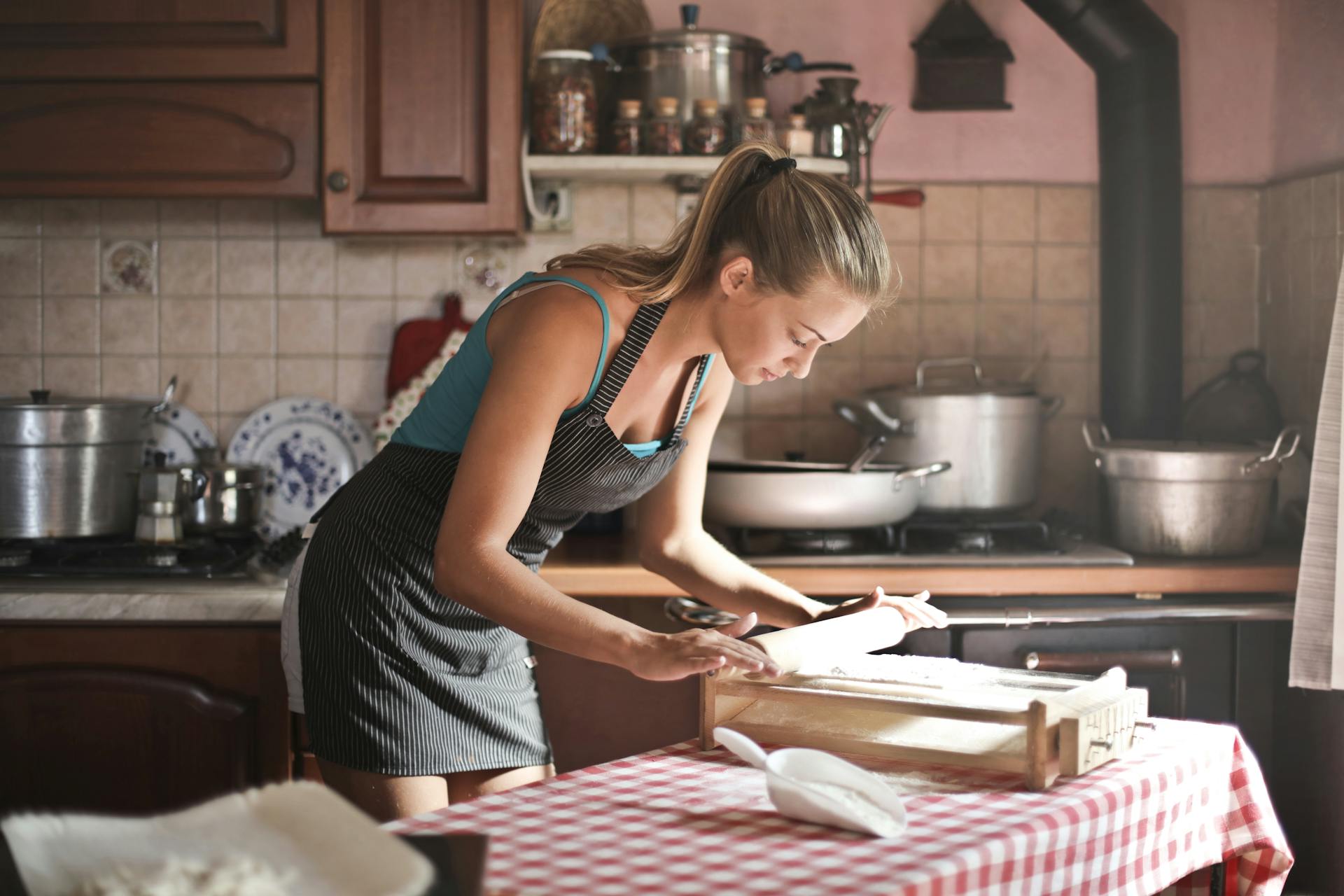
A young woman rolling dough for baking in kitchen | Source: Pexels
Now, rewind to the early days when I was still a naïve bride, eager to win over my new family. I cooked, cleaned, and hosted gatherings—all to show I was worthy of her son. But Lilith seemed to have her own agenda with her sly comments and backhanded compliments. Austin never saw it; those nuances were invisible to a son’s eyes.

A couple kissing on a ledge in front of the Eiffel Tower in Paris | Source: Unsplash
Then came our honeymoon phase, quite literally. We left for a romantic getaway a week after our wedding, leaving Lilith the keys to our cozy apartment to check the mail and such. The apartment was our first shared space, carefully arranged with love and a bit of IKEA-induced frustration.

Black handled key in a keyhole | Source: Pexels
Returning home, the air felt different. As soon as I stepped in, my heart sank. The kitchen resembled a culinary war zone—pots and pans shuffled around, utensils misplaced.
Our cozy living room? It was as if a home magazine editor had a bad day, everything rearranged. Worst of all, she had disposed of some cherished pictures and knick-knacks, and yes, even some of my lingerie had mysteriously vanished.

Red laced lingerie lying on white linen sheets | Source: Unsplash
I broke down, tears streaming down my face as I explained everything to Austin. He was furious, more at the invasion of our privacy than the actual rearranging. He confronted Lilith, only to return with the classic “misunderstanding” defense.
According to her, she was just “trying to be helpful.” She even had the audacity to shed tears, playing the victim to perfection, leaving Austin baffled and me infuriated.

A sad woman in a black and white polka-dot dress | Source: Pexels
Austin, bless his heart, tried to mend the chaos, suggesting, “Let’s just put everything back the way it was.” The kitchen became his project—a well-intentioned disaster. Lilith, it turned out, never taught him the finer points of domestic life, not even how to butter bread.

A husband holding his wife’s hands to comfort her | Source: Shutterstock
The ordeal taught me a valuable lesson about boundaries and relationships. But the real kicker came later. One afternoon, while Austin was out, Lilith dropped by. As I opened the door, there it was—that chilling smile.

A smiling senior woman | Source: Shutterstock
It wasn’t just any smile; it was a calculated smirk paired with a nod, an unmistakable sign she knew exactly what she had done and relished the chaos. That moment, that look, it was all I needed to understand the game she played was one of dominance, not love. And from that day on, I knew exactly what I was dealing with.

A determined woman standing with her arms crossed | Source: Shutterstock
I’m not usually one to stoke the fire of revenge, but let’s just say Lilith had unknowingly lit the match. And there I was, waiting for just the right breeze to fan the flames. It didn’t take long for the universe to whisper, “Now’s your chance, Everly.”

A sick older woman in a hospital bed | Source: Freepik
Just a week after our honeymoon drama, fate handed me the perfect script — Lilith fell ill and ended up in the hospital. Nothing serious, but serious enough to keep her out of the house for a while. And who do you think got the keys to her kingdom? That’s right, Austin.
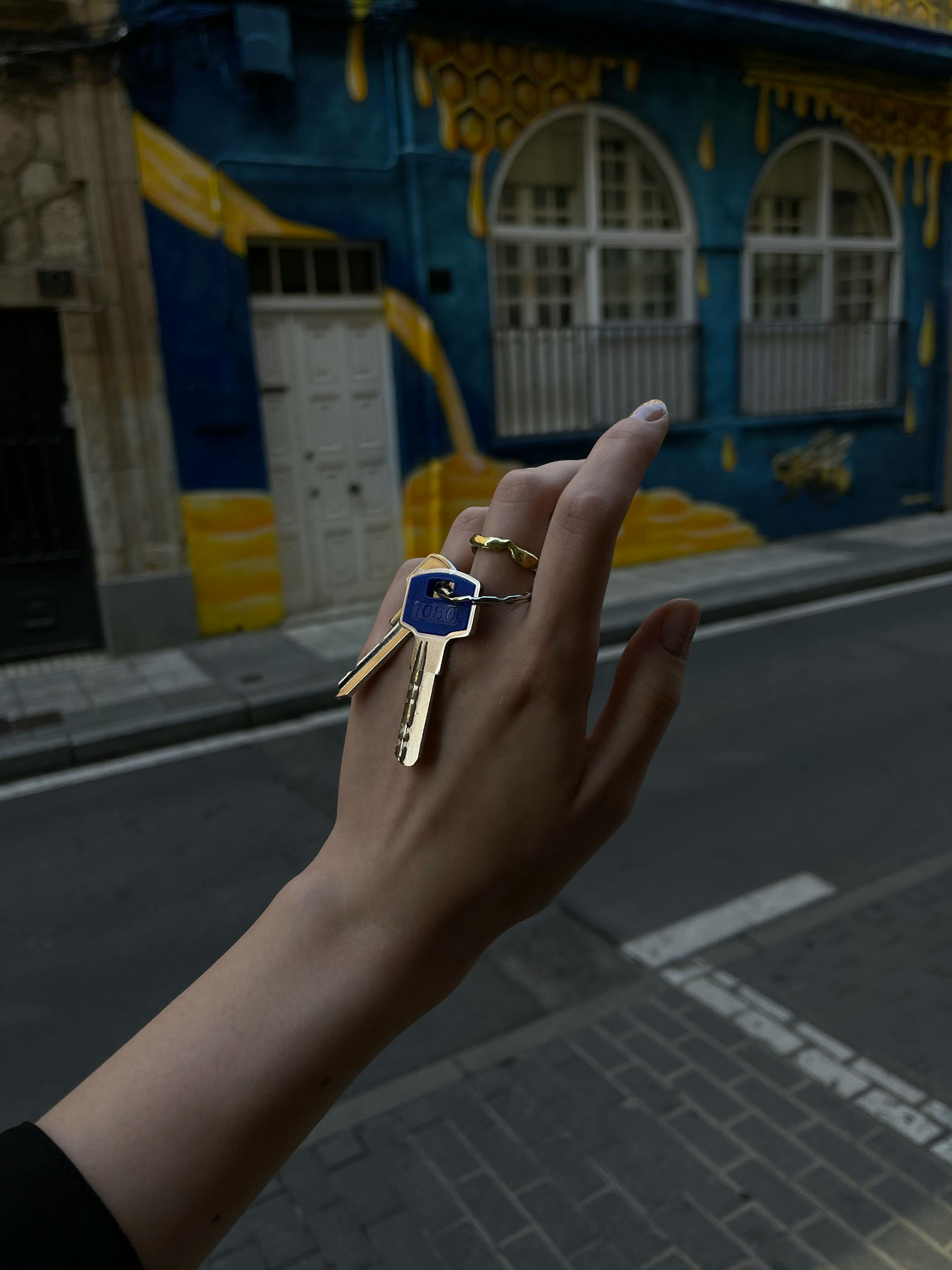
A woman’s hand holding keys | Source: Pexels
Now, I’m no saint, and the temptation was too good. I made a little detour and had a copy of her house key made—just a precaution, I told myself. As Austin went about his daily routines, none the wiser, I took a couple of days off work and embarked on my covert mission.

A wall plate rack with ceramic plates in a kitchen | Source: Pexels
Stepping into Lilith’s house felt like entering enemy territory. But there I was, a woman on a mission. I started in the kitchen, where I “reorganized” everything just the way she had done to mine. Out went the old, broken porcelain—honestly, it was doing her a favor.
Then, I swept through the house like a whirlwind of change. Pictures removed from walls? Check. Linen and coat closets shuffled? Double check. I even made sure her bathrooms looked disturbingly different.

A close-up photo of a woman holding a paper bag with flowers near a wall with blank frames | Source: Pexels
I meticulously avoided the living room, though. It was too visible, too risky. Austin couldn’t suspect a thing.
When the day came to bring Lilith home from the hospital, I played the devoted daughter-in-law card. “Honey, I thought I’d help clean up your mom’s place,” I chirped to Austin that morning, “you know, fresh start and all that jazz.” He looked at me, a bit puzzled but touched by the gesture. “That’s really kind of you, Ev,” he said, still clueless about my little adventure.

A man sweeping the floor at home | Source: Pexels
The day had a routine start, with Austin and me bustling around Lilith’s house, dusting off shelves, mopping floors, and making everything shine—it was a cleaning spree fit for a queen, or in this case, a queen bee. After the whirlwind cleanup, we hopped into the car, me settling into the backseat as Austin drove us to pick up his mom from the hospital.
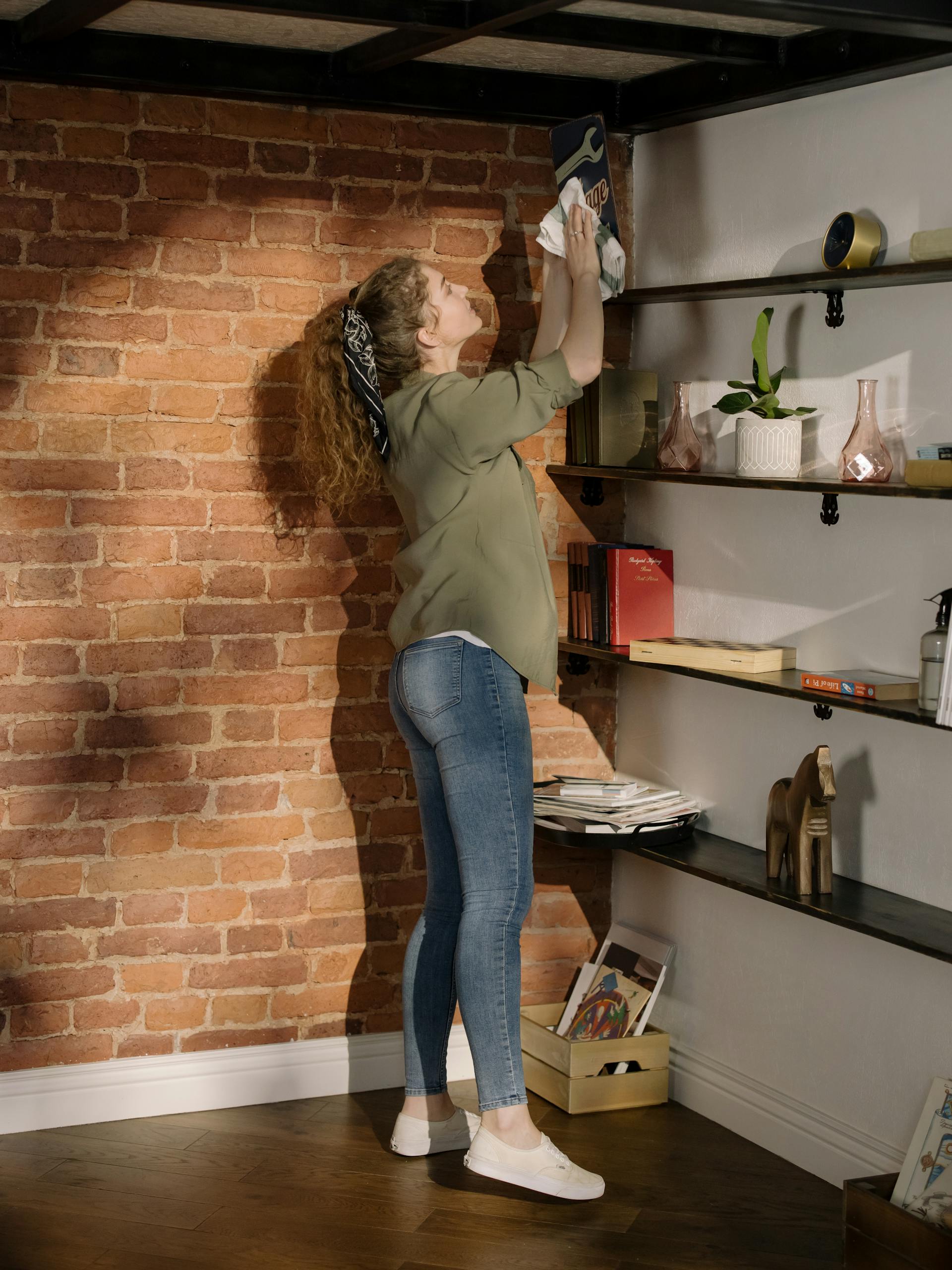
A woman dusting a wooden shelf at home | Source: Pexels
The drive was quiet, the kind of silence that was full of anticipation. As we pulled up to the hospital, I plastered on my best daughter-in-law’s smile. Lilith, looking frail but feisty as ever, didn’t take long to sense that something was amiss once we arrived home.
She stepped into the house, pausing as she scanned the living room. Her eyes narrowed, lips pursed. “What did you do with my pictures?” she demanded, her voice slicing through the calm like a knife.

An angry middle-aged woman screaming | Source: Shutterstock
Austin, ever the peacemaker, replied with a puzzled frown. “What do you mean, Mom?”
“You stole my pictures!!!” she accused, her voice climbing an octave.
I interjected with what I hoped was a soothing tone, “Oh, no, MIL. I just helped Austin clean; that’s all we did.”
Austin nodded, confirming, “Yeah, Mom, we just cleaned up a bit—nothing else.”

A tired man listening to his livid mother | Source: Shutterstock
Trying to diffuse the tension, I offered, “Would you like some tea?” But instead of gratitude, I received a sharp rebuke.
“Stay out of my kitchen!” she yelled, storming off to investigate further. Moments later, a scream erupted from the kitchen. “What have you done?” she wailed.
I exchanged a look with Austin, feigning confusion. He reiterated to his mom, “We only cleaned the counters and dishes, Mom. And mopped the floor.”

Two cooking pots lying on a kitchen counter | Source: Unsplash
But Lilith was livid, her face a mask of outrage as she shuffled through her disarranged belongings. Seeing her distress, I suggested to Austin, “Maybe my being here is upsetting her. I should probably go.”
He was visibly confused, unable to understand why his mother was reacting so harshly towards me. Reluctantly, he agreed, “Maybe that’s best.”

A couple conversing at home | Source: Shutterstock
So, with a cheer in my voice that belied the tension, I told Lilith, “I’ll be on my way then. Austin can call me when he’s ready to be picked up.”
As I turned to leave, I caught Lilith’s eye and gave her that same nod she’d given me—a silent acknowledgment of the chaos I’d invited into her orderly world. Austin, thankfully, was none the wiser as he faced away from us, missing the exchange.

A woman driving a car | Source: Pexels
Later, when I returned to pick him up, Austin shared how his mother had accused me of various misdeeds during my absence. Feigning concern, I suggested, “It sounds like your dear mom’s memory might be slipping with age,” to which he somberly agreed, “Yeah, it’s tough for her.”

A senior woman sitting with her arms crossed after a fallout with her daughter-in-law | Source: Shutterstock
As I drove home, the streetlights casting long shadows on the road, I pondered over the day’s events. Had my revenge been too harsh? Maybe. But sometimes, you have to fight fire with fire, especially when dealing with someone as manipulative as Lilith.

A laughing Brunette woman | Source: Pexels
So, dear readers, was I justified in my actions, or should I have risen above it all? What would you have done in my shoes? Let me know your thoughts, because as much as I believe in karma, I also believe sometimes you have to roll up your sleeves and stir the pot a bit yourself.
If you enjoyed reading this story, here’s another one you might like even more:
My Mil Attempted to Take My Late Mother’s Heirloom, Ended Up Alone and Defeated after Falling into My Trap

A happy couple lying in bed and hugging each other | Source: Pexels
In the warmth of our tiny, sunlit living room, with Logan’s laughter mingling with the soft notes of a forgotten song playing in the background, I often find myself reflecting on the journey that led us here.
It wasn’t the kind of whirlwind romance that you read about in novels or see in movies; rather, it was a slow burn, a gradual intertwining of lives that seemed destined to be separate.

Barbecue sticks lying on a charcoal grill | Source: Pexels
We met in the most mundane of circumstances — a mutual friend’s barbecue. Logan, with his easy smile and a plate full of questionable-looking burgers, offered me a seat and a story.
I, in my awkwardness, spilled my drink, staining the earth beneath us in a splash of red. Yet, from that clumsy introduction bloomed a connection that felt as natural as breathing.

Spilled red wine from a glass | Source: Pexels
We shared dreams under the canopy of stars and found solace in our shared laughter. Our decision to marry was not marked by grand gestures but by a quiet certainty that life was better together, in all its beautiful simplicity.
Amidst these memories, there’s one that stands out, a moment heavy with the weight of passing time. My mother, a vibrant soul taken too soon by the cruel clasp of cardiac arrest, left me a legacy wrapped in the soft glimmer of gold.

A loving couple holding hands in the evening | Source: Pexels
On her deathbed, she pressed into my hands a vintage necklace, its intricate designs whispering tales of our ancestors. “This necklace,” she had said, her voice a frail thread of sound, “is a testament to our family’s strength and love. I wore it on my wedding day, as did your grandmother. Now, it’s yours, Freya. Let it remind you of where you come from and the love that built you.”

An ailing senior woman lying in a hospital bed | Source: Freepik
This heirloom, more precious than the rarest of gems, became my talisman, a bridge to the past, and a beacon for the future. It was a piece of history, a narrative of love and loss, woven into the delicate filigree of its design.
Into this tapestry of memories and moments, Cecilia, my mother-in-law, entered with the subtlety of a storm. Her life, marked by its own trials and tribulations, had recently veered off course, leaving her without a home.
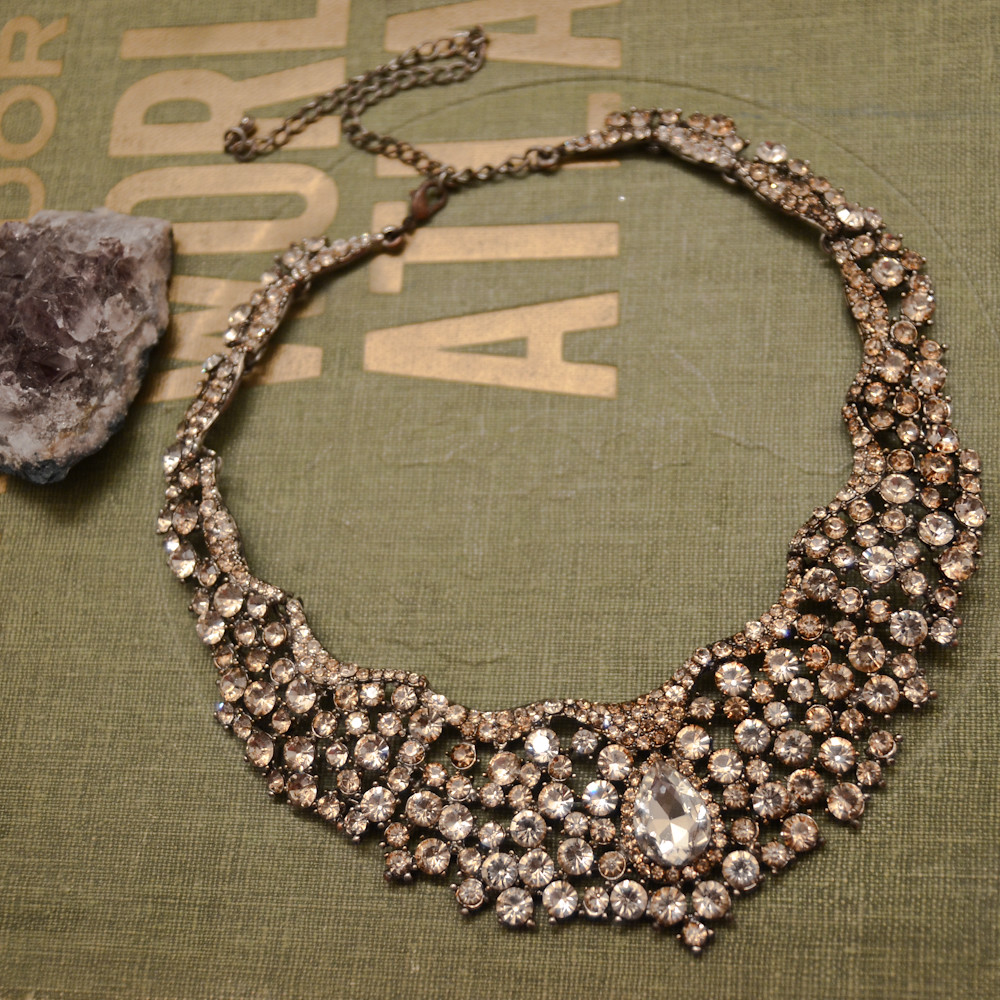
A vintage necklace | Source: Flickr
Logan and I, bound by a sense of duty and compassion, welcomed her into our home, offering her sanctuary and a chance to rebuild. However, Cecilia’s fascination with the necklace soon became apparent.
Each day, she would find a reason to bring it up, her requests to wear it growing more insistent. “It’s just so beautiful, Freya. Can’t I just try it on once?” she’d plead, her eyes alight with a strange fervor.
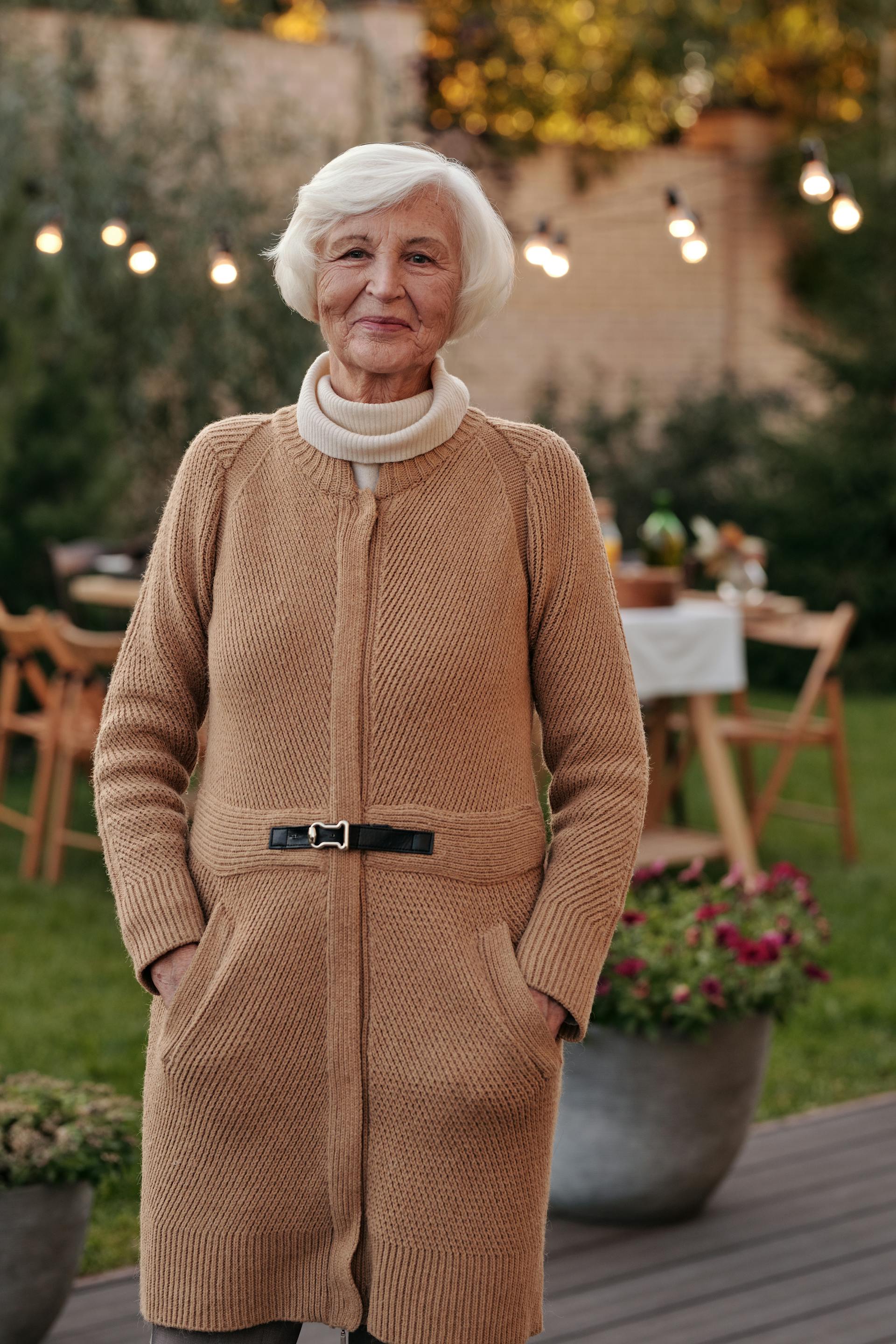
An elderly woman standing in a garden | Source: Pexels
But the necklace was not just an adornment; it was a link to my mother, to the love and life she had lived. So, with every request, I found myself gently refusing, hoping she’d understand it was not just a piece of jewelry but a piece of my heart.
Recently, my world shattered when I found a void where my most cherished possession should have been. Returning home from work, I reached for the necklace, only to find an empty nightstand.
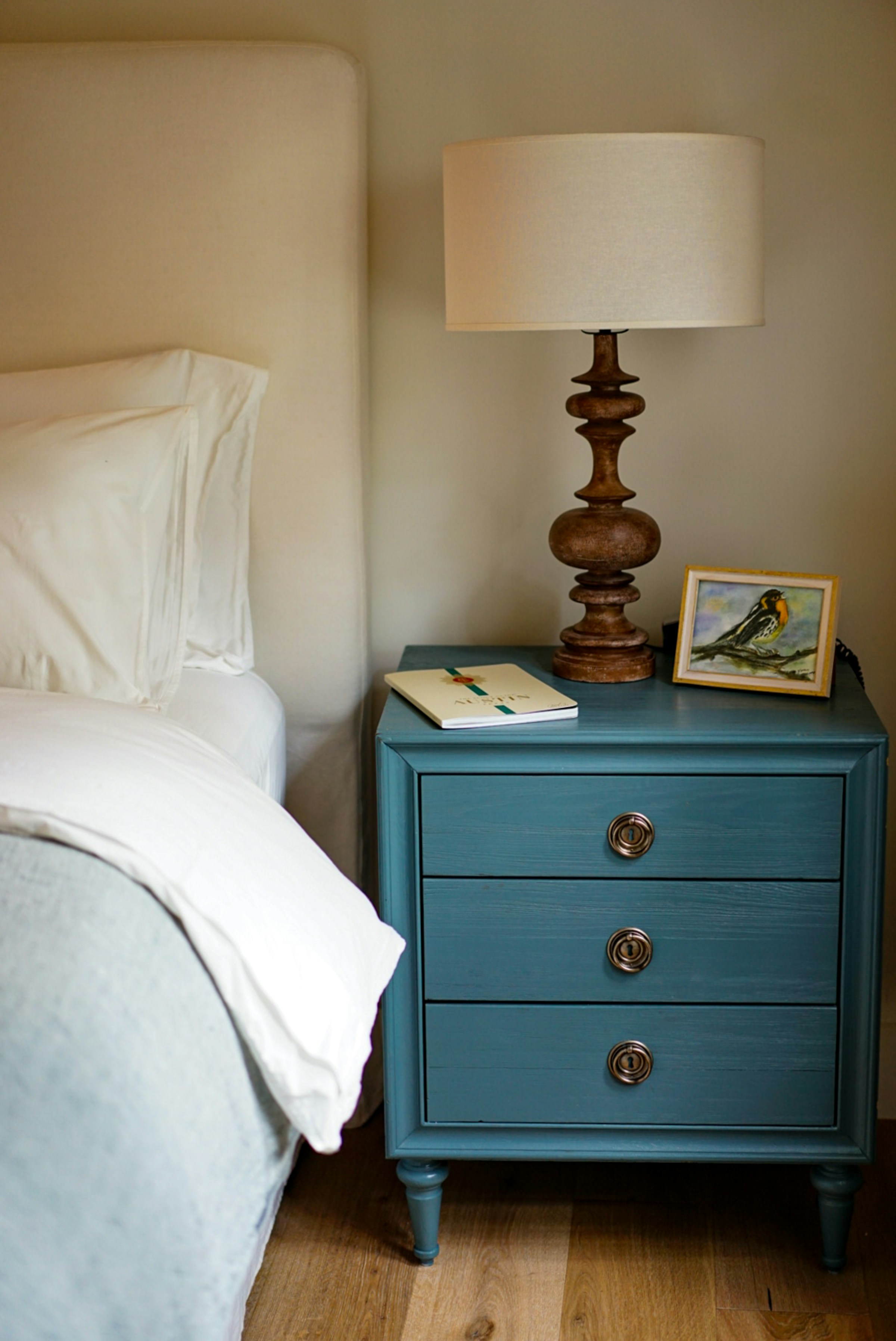
A brown wooden two-drawer nightstand | Source: Unsplash
Panic surged through me, its icy fingers wrapping around my heart. Cecilia was away, visiting her sister, her alibi seemingly rock-solid. And yet, a nagging certainty clawed at my mind, whispering that she was involved.
When confronted over the phone, her denial was swift, coated with feigned shock and innocence. But the seeds of suspicion had already taken root.
Desperation led me to concoct a plan that was as bold as it was risky. Thereafter, I decided to lay a trap for Cecilia, one that would reveal her true colors to the world and help me catch her in the act.

A woman in a black dress looking determined | Source: Shutterstock
The next day, I borrowed a friend’s phone and called her, disguising my voice slightly as I spun a tale of unexpected fortune. “Congratulations,” I announced, “You’ve been selected as the winner of an exclusive draw, earning an invitation to a grand, private party.” The bait was set.
Her reaction was as predictable as it was swift. Greed, that ever-present shadow in her actions, took hold, and she eagerly accepted the invitation.

A woman talking on her phone | Source: Shutterstock
Soon afterward, I reserved space in an upscale restaurant, ensuring the setting would be as convincing as it was public. Invitations went out to nearly every member of our extended family, each one in on the ruse, their roles in this play of justice clear.
During the night of the “event,” the restaurant room buzzed with tense anticipation, each of us playing our part in the charade. When Cecilia made her entrance, the air shifted palpably. There she was, draped in elegance and, as I had suspected, wearing the necklace.

A senior woman wearing a necklace | Source: Freepik
Its familiar gleam against her neck was a blow more painful than a physical strike. For a moment, she basked in the limelight of her deceit, until her eyes caught the collective stare of the family, and the reality of her situation dawned on her. At that moment, her hands flew to the necklace, a futile gesture to shield her guilt from the room’s judgmental eyes.

A person holding a silver-colored skeleton key | Source: Pexels
The silence that followed was deafening, a tangible cloud of betrayal and disappointment. Logan stood by my side, his face a mask of disbelief and hurt. The family’s reaction was unanimous; they turned away, a symbolic gesture of their stance. Meanwhile, Cecilia stood alone, the weight of her actions settling around her like a shroud.
The revelation of her duplicity came later, a confession wrung out by the undeniable evidence. It turned out she had made a duplicate key, planning her theft with meticulous care, choosing a time when neither Logan nor I would be home. Moreover, her sister, unwittingly or not, had provided the perfect alibi.

An anxious senior lady looking through the window | Source: Shutterstock
As I write this, reflecting on the tumultuous whirlwind of emotions and events, I’m left pondering the path of righteousness and the measures one is compelled to take in the face of betrayal. The necklace, once a symbol of familial love and legacy, had sparked a sequence of events that laid bare the complexities of human nature.

A blonde woman standing near a pile of stones | Source: Unsplash
Did I do the right thing? It’s a question that echoes in the silent moments, a query without a simple answer. What would you have done, faced with the theft of something irreplaceable, not just in value but in sentiment? The actions I took, driven by desperation and a desire for truth, have left a fracture within our family, a reminder of the cost of deceit and the value of trust.
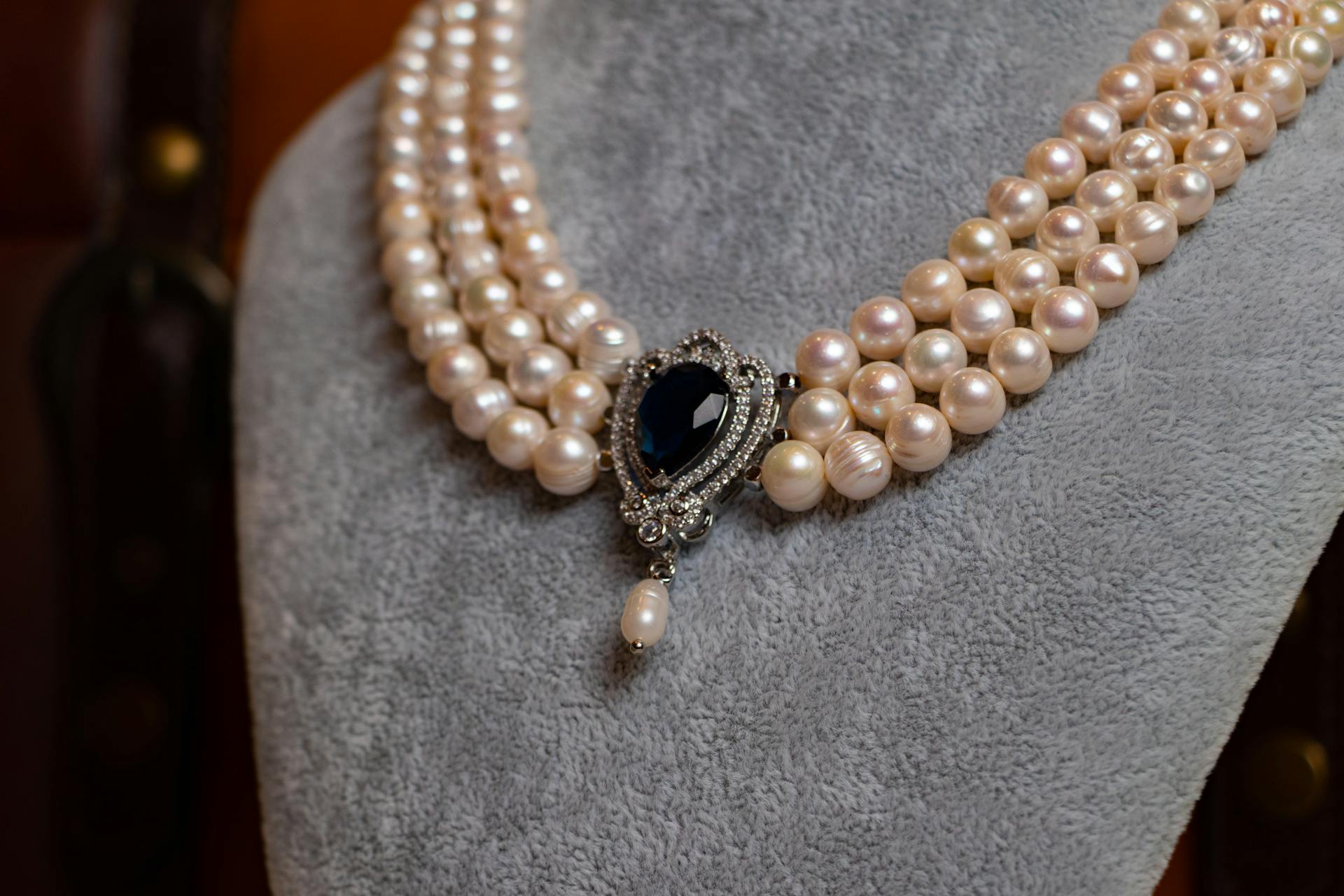
A pearl necklace with a dark gemstone | Source: Pexels
In the end, the necklace was returned to its rightful place, a bittersweet victory. As for Cecilia, the consequences of her actions are a burden she must bear, a reminder of the thin line between right and wrong.
This work is inspired by real events and people, but it has been fictionalized for creative purposes. Names, characters, and details have been changed to protect privacy and enhance the narrative. Any resemblance to actual persons, living or dead, or actual events is purely coincidental and not intended by the author.
The author and publisher make no claims to the accuracy of events or the portrayal of characters and are not liable for any misinterpretation. This story is provided “as is,” and any opinions expressed are those of the characters and do not reflect the views of the author or publisher.



Leave a Reply